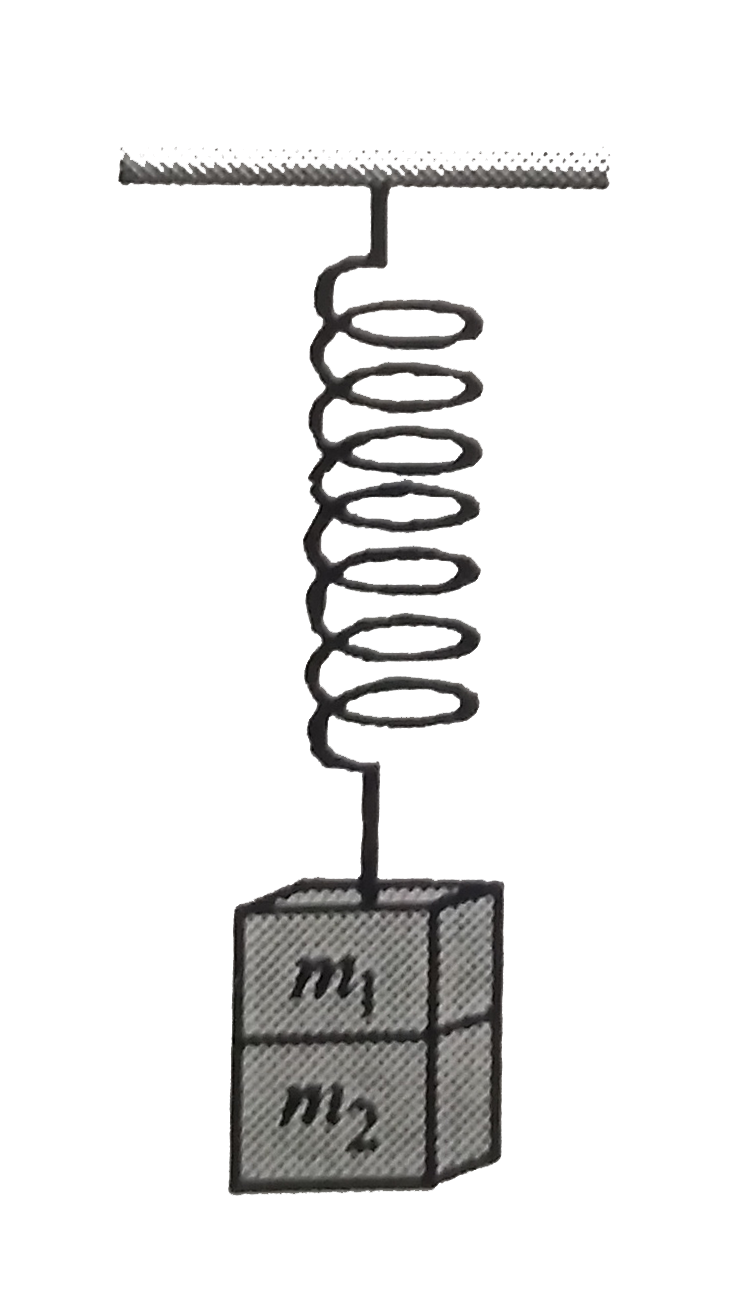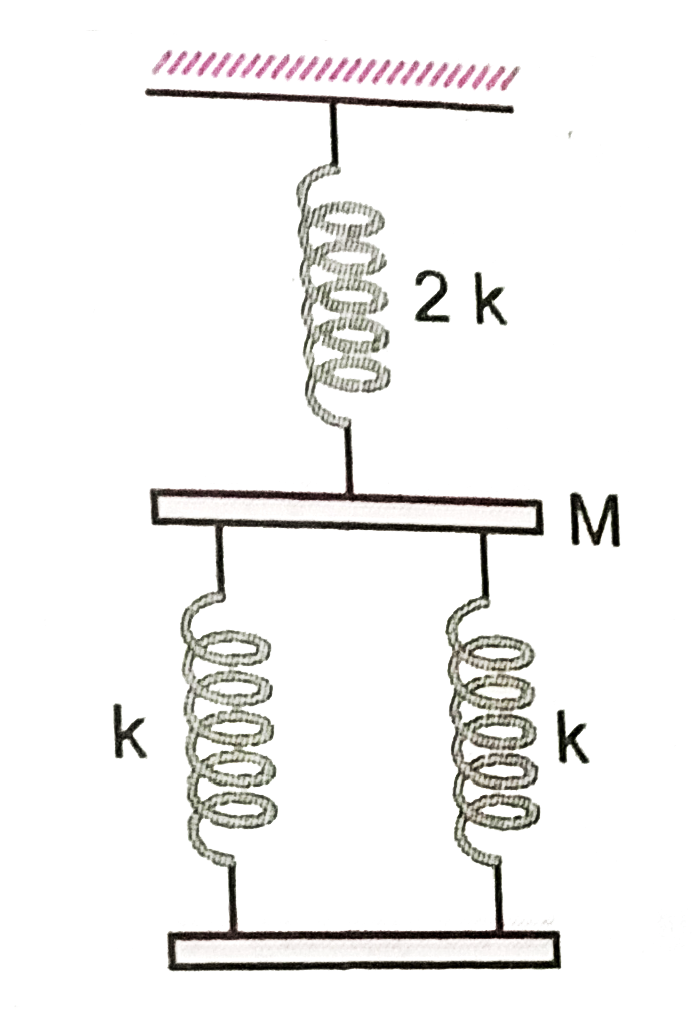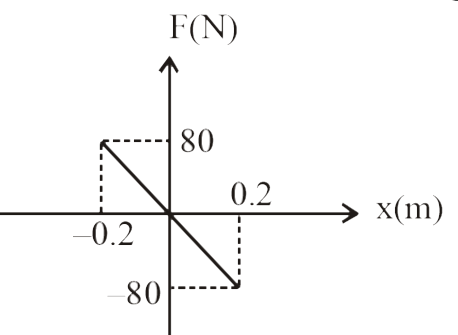Complete Solutions to PHYSICS of chapter OSCILLATIONS of Class 11 book with complete answers and questions
| Class 11 | PHYSICS |
| Chapter | OSCILLATIONS |
| DISHA | PHYSICS |
| Number Of Questions | 66 |
| Academic Year | 2023-24 |
The time period of a second’s pendulum is 2 sec. The spherical bob which is empty from inside has a mass of 50 gm. This is now replaced by another solid bob of same radius but having different mass of 100 gm. The new time period will be
01:52View SolutionThe length of a simple pendulum is increased by 1%. Its time period will
01:17View SolutionThe bob of a pendulum of length l is pulled aside from its equilibrium position through an angle `theta` and then released. The bob will then pass through its equilibrium position with a speed v, where v equals
05:31View SolutionA simple pendulum is executing simple harmonic motion with a time period T. If the length of the pendulum is increased by 21%, the percentage increase in the time period of the pendulum of is
02:40View SolutionA chimpanzee swinging on a swing in a sitting position, stands up suddenly, the time period will
03:57View SolutionA simple pendulum consisting of a ball of mass m tied to a thread of length l is made to swing on a circular arc of angle q in a vertical plane. At the end of this arc, another ball of mass m is placed at rest. The momentum transferred to this ball at rest by the swinging ball is
02:50View SolutionThe time period of a simple pendulum of length L as measured in an elevator descending with acceleration g / 3 is
02:03View SolutionA mass m is suspended from the two coupled springs connected in series. The force constant for springs are `k_(1) "and" k_(2).` The time period of the suspended mass will be
01:37View SolutionA spring having a spring constant k is loaded with a mass m. The spring is cut into two equal parts and one of these is loaded again with the same mass. The new spring constant i
01:44View SolutionA mass m = 100 gm is attached at the end of a light spring which oscillates on a frictionless horizontal table with an amplitude equal to 0.16 metre and time period equal to 2 sec. Initially the mass is released from rest at t = 0 and displacement x = –0.16 metre. The expression for the displacement of mass at any time t is
02:47View SolutionTwo masses m1 and m2 are suspended together by a massless spring of constant k. When the masses are in equilibrium, m1 is removed without disturbing the system. The amplitude of oscillations is
 04:24View Solution
04:24View SolutionThe composition of two simple harmonic motions of equal periods at right angle to each other and with a phase difference of p results in the displacement of the particle along
02:39View SolutionA particle, with restoring force proportional to displacement and resulting force proportional to velocity is subjected to a force `F sin omega t`. If the amplitude of the particle is maximum for `omega = omega_(1)`, and the energy of the particle is maximum for `omega=omega_(2)`, then
02:11View SolutionAmplitude of a wave is represented by `A(c)/(a+b+c)` Then resonance will occur when
01:01View SolutionTwo blocks A and B each of mass m are connected by a massless spring of natural length L and spring constant k. The blocks are initially resting on a smooth horizontal floor with the spring at its natural length. A third identical block C also of mass m moves on the floor with a speed v along the line joining A and B and collides with A. Then
The kinetic energy of the A-B system at maximum compression of the spring is `mv^(2)//4`
The maximum compression of the spring `vsqrt(m//3k)
The kinetic energy of the A-B system at maximum compression
The maximum coppression of the spring is `vsqrt(m//k)05:13View SolutionA simple pendulum of length L and mass (bob) M is oscillating in a plane about a vertical line between angular limits `-phi` and `+phi` For an angular displacement `theta(|theta|ltphi).`the tension in the string and the velocity of the bob are T and v respectively. The following relations hold good under the above conditions
`T-Mgcostheta=(Mv^(2))/(L)`
`T costheta=Mg`
The magnitude of the tangential acceleration of the bob `|a_(T)|=gsintheta`
`T=Mgcostheta`04:45View SolutionIdentify wrong statements among the following
The greater the mass of a pendulum bob, the shorter is its frequency of oscillation
A simple pendulum with a bob of mass M swings with an angular amplitude of `40^(@)`. When its angular amplitude is`20^(@)`, the tension in the string is less than Mgcos`20^(@)`. (3) The fractional change in the time period of a pendulum on changing the temperature is independent of the length of the pendulum.
As the length of a simple pendulum is increased, the maximum velocity of its bob during its oscillation will also decreases.05:58View SolutionA particle performs linear SHM such that it is placed on plat- form & platform along with particles oscillate vertically up and down with amplitude A = 1cm. If the particle does not loose contact with platform anywhere and mass of particle is 1 kg, find :
The minimum, possible time period `("take"" " pi=sqrt(g))`02:15View SolutionA particle performs linear SHM such that it is placed on plat- form & platform along with particles oscillate vertically up and down with amplitude A = 1cm. If the particle does not loose contact with platform anywhere and mass of particle is 1 kg, find :
For minimum time period condition average potential energy between t = 0 to t = 0.05 sec`("Take" " "g=10m//s^(2))02:53View SolutionStatement-1 : The periodic time of a hard spring is less as compared to that of a soft spring. Statement-2 : The periodic time depends upon the spring constant, and spring constant is large for hard spring
03:13View SolutionStatement-1 : The percentage change in time period is 1.5%, if the length of simple pendulum increases by 3% Statement-2:Time period is directly proportional to length of pendulum
02:29View SolutionIf x, and a denote the displacement, the velocity and the acceler of a particle executing simple harmonic motion of time period T, then, which of the following does not change with time?
01:03View SolutionA mass is suspended separately by two different springs in successive order, then time periods is `t_(1) "and" t_(2)` respectively. It is connected by both springs as shown in fig. then time period is `t_(0)`. The correct relation is
 03:25View Solution
03:25View SolutionA rod of length l is in motion such that its ends A and B are moving along x-axis and y-axis respectively. It is given that `(d theta)/(dt) = 2` rad/sec always . P is a fixed point on the rod . Let M be the projection of P on x-axis . For the time interval in which `theta` changes from 0 to `(pi)/(2)` , the correct statement is
04:16View SolutionA particle of mass m executes simple harmonic motion with amplitude a and frequency v. The average kinetic energy during its motion from the position of equilinrium to the end is.
02:28View SolutionA mass M attached to a spring oscillates with a period of 2s. If the mass is increased by 2 kg, then the period increases by 2s. Find the initial mass M assuming that Hooke's law is obeyed.
02:34View SolutionThe amplitude of damped oscillator becomes `1/3` in `2s`. Its amplitude after `6s` is `1//n` times the original. The value of `n` is
02:21View SolutionAssume the earth to be perfect sphere of uniform density. If a body is dropped at one end of a tunnel dug along a diameter of the earth (remember that inside the tunnel the force on the body is – k times the displacement from the centre, k being a constant), it (body) will
03:28View SolutionA particle undergoes simple harmonic motion having time period T. The time taken in 3/8th oscillation is
07:17View SolutionA particle is executing simple harmonic motion with amplitude A. When the ratio of its kinetic energy to the potential energy is `(1)/(4)` , its displacement from its mean position is
02:10View SolutionThe length of a simple pendulum executing simple harmonic motion is increased by `21%`. The percentage increase in the time period of the pendulum of increased lingth is.
02:38View SolutionThe time period of a mass suspended from a spring is T. If the spring is cut into four equal parts and the same mass is suspended from one of the parts, then the new time period will be
02:19View SolutionTwo simple harmonic motions act on a particle. These harmonic motions are `x = A "cos"omegat + delta , y = A "cos"(omegat + alpha)` when `delta= alpha + (pi)/(2)` , the resulting motion is
02:58View SolutionA point mass oscillates along the x-axis according to the law `x=x_(0) cos(moegat-pi//4). If the acceleration of the particle is written as `a=A cos(omegat+delta), the .
03:25View SolutionA mass (M) is suspended from a spring of negligible mass. The spring is pulled a little and then released so that the mass executes SHM of time period T. If the mass is increased by m, the time period becomes `(5T)/3`. Then the ratio of `m/M` is .
01:52View SolutionA body oscillates with a simple harmonic motion having amplitude 0.05 m. At a certain instant of time, its displacement is 0.01 m and acceleration is `1.0 m//s^(2)`. The period of oscillation is
01:49View SolutionThe particle executing simple harmonic motion has a kinetic energy `k_(0) cos^2 omega t` The maximum value of the potential energy and the total energy are respectively
01:10View SolutionA simple pendulum attached to the ceiling of a stationary lift has a time period T. The distance y covered by the lift moving upwards varies with time t as `y = t^(2)` where y is in metres and t in seconds. If `g = 10 m//s^(2)`, the time period of pendulum will be
04:05View SolutionA particle moves with simple harmonic motion in a straight line. In first `taus`, after starting form rest it travels a destance a, and in next `tau s` it travels 2a, in same direction, then:
08:24View SolutionTwo simple harmonic are represented by the equation `y_(1)=0.1 sin (100pi+(pi)/3) and y_(2)=0.1 cos pit`.
The phase difference of the velocity of particle 1 with respect to the velocity of particle 2 is.03:04View SolutionMasses `M_(A) "and" M_(B)` hanging from the ends of strings of lengths `L_(A) "and" L_(B)` are executing simple harmonic motions. If their frequencies are `f_(A) = 2f_(B)`, then
02:33View SolutionIn damped oscillations, the amplitude of oscillation is reduced to one-third of its initial value of `9cm` at the end of `100` oscillations. What will be its amplitude of oscillation in `cm` when it completes `200` oscillations.
04:32View SolutionThree spring are connected to a mass `m(=100g)` as shown in figure. Given `k=2.5Nm^(-1)`. (a) What is the effecitve spring constant of the combination of spring constant of the combination of springs? (b) When mass m oscillates, find time period of its vibration.
 03:56View Solution
03:56View SolutionA body executes simple harmonic motion. The potential energy (P.E), the kinetic energy (K.E) and energy (T.E) are measured as a function of displacement `x`. Which of the following staements is true?
01:39View SolutionA simple harmonic wave having an amplitude a and time period T is represented by the equation y = `5"sin"pi(t + 4)m`. Then the value of amplitude (a) in (m) and time period (T) in second are
02:19View SolutionA particle moves such that its acceleration ‘a’ is given by` a = – zx`where x is the displacement from equilibrium position and z is constant. The period of oscillation is
01:36View SolutionThe displacement of an obuect attached to a spring and executing simple harmonic motion is given by `x=2xx100^(-2) cos pit` metre. The time at which the maximum speed first occurs is.
02:14View SolutionA tunnel has been dug through the centre of the earth and a ball is released in it. It executes S.H.M. with time period
04:45View SolutionThe displacement equation of a particle is `x=3 sin 2t+4cos2t`. The amplitude and maximum velocity will be respectively
02:13View SolutionA body of mass 0.01 kg executes simple harmonic motion about x = 0 under the influence of a force as shown in figure. The time period of SHM is
 02:30View Solution
02:30View SolutionTwo oscillators are started simultaneously in same phase. After 50 oscillations of one, they get out of phase by `pi`, that is half oscillation. The percentage difference of frequencies of the two oscillators is nearest to
01:57View SolutionThe length of a second’s pendulum at the surface of earth is 1 m. The length of second’s pendulum at the surface of moon where g is 1/6th that at earth’s surface is
02:17View SolutionA simple spring has length l and force constant K. It is cut into two springs of lengths `l_(1) "and" l_(2)` such that `l_(1) = n l_(2)` (n = an integer). The force constant of spring of length `l_(1)` is
01:48View SolutionThe displacement of a particle from its mean position (in mean is given by `y = 0.2 sin(10pi t + 1.5 pi) cos (10 pi t+ 1.5 pi)`. The motion but not `S.H.M.`
02:08View SolutionA point particle if mass `0.1 kg` is executing SHM of amplitude `0.1 m`. When the particle passes through the mean position, its kinetic energy is `8 xx 10^(-3)J`. Write down the equation of motion of this particle when the initial phase of oscillation is `45^(@)`.
02:16View SolutionFor a simple pendulum, a graph is plotted between itskinetic energy `(KE)` and potential energy `(PE)`against its displacement `d`. Which one of the following represents these correctly? (graph are schematic and not drawn to scale)
02:29View SolutionThe equation of a simple harmonic wave is given by
`y = 3 sin"(pi)/(2) (50t - x)`
where `x` and `y` are in meters and `x` is in second .The ratio of maximum particle velocity to the wave velocity is04:57View SolutionA body of mass `m` is suspended from three springs as shown in figure. If mass `m` is displaced slightly then time period of oscillation is
 03:14View Solution
03:14View SolutionA hollow sphere is filled with water through a small hole in it. It is then hung by a long thread and made to oscillate. As the water slowly flows out of the hole at the bottom, the period of oscillation of the sphere.
04:03View SolutionThe figure shows the displacement-time graph of a particle executing `SHM`. If the time period of oscillation is `2s`, then the equation of motion is given by
 01:48View Solution
01:48View SolutionA coin is placed on a horizontal platform which undergoes vertical simple harmonic motion of angular frequency `omega`. The amplitude of oscillation is gradually increased. The coin will leave contact with the platform for the first time
01:50View SolutionThe bob of a simple pendulum executm simple harmonic motion in water with a period t, while the period of oscillation of the bob is `t_(0)` in air. Negleting frictional force of water and given that the density of the bob is (4//3)xx1000 kg//m^(3).
What relationship between t and `t_(0)` is true.02:55View SolutionStarting from the origin a body osillates simple harmonicall with a period of 2 s. A fter what time will its kinetic energy be 75% of the total energy?
03:10View SolutionDue to some force `F_(1)` a body oscillates with period `4//5s` and due to other force `F_(2)` it oscillates with period `3//5s`. If both the forces acts simultaneously in same direction then new period is
03:38View SolutionA block connected to a spring oscillates vertically. A damping force `F_(d)`, acts on the block by the surrounding medium. Given as `F_(d) = –bV`, b is a positive constant which depends on :
01:27View SolutionA simple pendulum of length `l` has maximum angular displacement `theta` . Then maximum kinetic energy of a bob of mass `m` is
02:26View Solution
PHYSICS questions and complete solutions for chapter OSCILLATIONS of DISHA PHYSICS (HINGLISH) of Class 11
